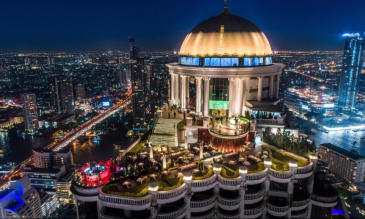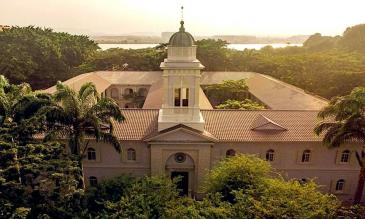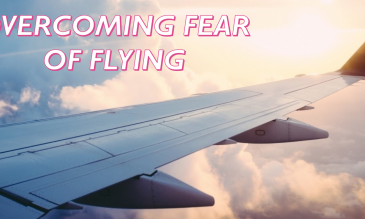- On the 1st of August, 1951, Japan Air Lines Co., Ltd. was established with an initial capital of ¥100 million, its headquarters being located in Ginza, Ch??, Tokyo.
- During 1952, first commercial services were introduced, and on the 1st of August, 1953, the Diet of Japan passed the Japan Air Lines Company Act, forming the state-owned Japan Air Lines two months later. This new company assumed all liabilities and assets of its private predecessor.
- On the 2nd of February, 1954, Japan Air Lines carried 18 passengers from Tokyo to San Francisco, starting its first international service.
- In 1960, Japan Air Lines entered the jet age, adding its first Douglas DC-8 to the fleet.
- By 1965, Japan Air Lines was headquartered in Marunouchi, Chiyoda, Tokyo, a lot of new destinations were added to the network, and the fleet only consisted of jets.
- In 1972, JAL was granted flag carrier status to operate international routes.
- During the 1970s, Boeing 727s, Boeing 747s, Convair 880s and McDonnell Douglas DC-10s were added to the fleet due to an increase in frequency of domestic and international traffic.
- In the 1980s, the airline used two Boeing 747-400s, known as Japanese Air Force One and Japanese Air Force Two, to perform special flights for Pope John Paul II, Japanese prime ministers, the Crown Prince Akihito and Crown Princess Michiko of Japan.
- During the same period, new Boeing 747-100SR, Boeing 747-SUD and Boeing 767 jets were added to the fleet, while the old Boeing 727s and Douglas DC-8s were retired.
- In 1990, before the start of the Gulf War, Japan Airlines operated flights to help evacuate Japanese citizens from Iraq.
- Japan Air Charter was established in late October, 1990.
- In September, 1996, Japan Airlines became the official airline of Tokyo Disneyland, after signing an agreement with The Walt Disney Company.
- In 2001, Japan Air System and Japan Airlines agreed to merge, establishing a new holding company, called Japan Airlines System one year later. This formed a new core of the JAL Group and all aircraft liveries were changed to match a new design.
- On the 1st of April, 2004, JAL changed its name to Japan Airlines International and JAS became Japan Airlines Domestic.
- On the 26th of June, 2004, the parent company Japan Airlines System changed its name to Japan Airlines Corporation.
- Finally, Japan Airlines International and Japan Airlines Domestic merged into a single brand, Japan Airlines International on the 1st of October, 2006.
- On the 1st of April, 2007, JAL joined the Oneworld Alliance.
- Exactly one year later, JAL officially merged its former subsidiary Japan Asia Airways (JAA) into the mainline Japan Airlines.
- In 2009, JAL operated a biofuel demonstration flight using jet fuel derived from camelina for the first time. In the same year, they introduced a carbon offset program for customers that are environmentally conscious. Later during that year, JAL opened a website designed to meet the diverse needs of their customers. In the same year, for the first time in Asia, JAL implemented “Ultimate Eco-flight” measures to mitigate environmental impact. During that year, JAL was awarded twice with “Good Design Awards”: once for “Guam route economy class” in-flight meals, and the second time for International Executive Class Seats “JAL Shell Flat Neo”.
- During 2010, JAL was certified No. 1 by US Conducive Technology as the world’s leader in meeting arrival times. Later that year, they introduced new seats for international flights of the JAL Boeing 767-300ER, and a new entertainment system (in-flight). In the same year, they received formal authorization from the US Department of Transportation for anti-trust exemption for JAL and American Airlines.
- In 2011, JAL was certified by US Conducive Technology as the “world number 1 for the second year in a row” in meeting arrival times and certified by J-Air as “No. 1 in Asia”. In the same year, before April, they began the operation of the first aircraft with the new logo for charter and international flights.
- In April 2011, the airline changed its name to Japan Airlines Co., Ltd. and introduced their new logo. Later that year Qantas Group, Japan Airlines and Mitsubishi Corporation agreed to establish JetStar Japan. During the same year, JAL was awarded with the “Good Design Award” for three passenger service products (Bamboo wheelchairs, International Executive Class Seats, and Paris route meals). Later that year, the airline expanded the routes and contributed to the reduction of greenhouse emissions.
- In 2012, JAL network was certified by US Conducive Technology as “World No. 1 Network by Carrier” for meeting arrival times. They were also certified as “No. 1 in the Asian Region” by Japan Air Commuter.
- In March 2012, Japan Airlines received its first two Boeing 787 Dreamliner aircraft from Boeing. The Dreamliner’s first commercial flight, the new JAL service between Tokyo (Narita) and Boston, was the first-ever nonstop flight to connect Boston with Asia. As soon as subsequent aircraft are delivered, the 787 Dreamliner is scheduled to operate on routes between Tokyo and San Diego, Beijing, New Delhi, Moscow, and Singapore.
- In October 2013, JAL ordered 56 Airbus A350 XWB aircraft (firm orders for 18 A350-900s and 13 A350-1000s, plus 25 options), JAL’s first ever order for Airbus aircraft. The A350 XWBs, scheduled for entry into service from 2019, will be gradually replacing the aging fleet over an approximately six-year period.
- In May 2014, Japan Transocean Air (JTA), a Japan Airlines group company, placed an order for 12 Boeing B737-800 aircraft, choosing to continue operating an all-Boeing fleet of 737s as part of its strategy to renew its fleet from 2016.
- In 2015, Japan Airlines introduced the Boeing 787-9 Dreamliner with an all-new cabin interior, JAL SKY SUITE 787 (SS9). Throughout 2014, under the theme of raising the bar one class above in all cabin services, Japan Airlines has been introducing on select international routes the JAL SKY SUITE 777, the JAL SKY SUITE 767, and most recently the JAL SKY SUITE 787 (SS8). The SS9 features 44 fully-flat JAL SKY SUITE seats in Business Class, 35 spacious JAL SKY PREMIUM seats in Premium Economy, and 116 JAL SKY WIDER II seats in Economy Class.
- In 2016, Japan Airlines (JAL) received the Good Design Award for its JAL SKY SUITE 777 (SS2) configured for Boeing 777-200ER aircraft. This JAL SKY SUITE 777 was introduced on select international routes from June 2016, and newly revamped aircraft are currently operating on routes between Tokyo (Haneda) and Bangkok, Singapore, and Hong Kong, as well as routes between Honolulu and Tokyo (Narita), Osaka (Kansai), and Nagoya (Chubu).
- In September 2017, for the first time since undergoing bankruptcy reorganization in 2010, Japan Airlines will launch additional international flights serving Australia and Hawaii. Melbourne will become JAL’s second destination in Australia, and a nonstop service will return between Tokyo (Narita) and Kona. These new routes will be operated with the JAL’s well-received JAL SKY SUITE configured aircraft.
- In July 2018, Japan Airlines became a Skytrax 5-Star airline, the second Japanese airline to get the Skytrax 5-Star rating, after ANA All Nippon Airways. The airline has also received the Best Economy Class Airline Seats award at the World Airline Awards.
- In 2019, at the Skytrax World Airline Awards, Japan Airlines was awarded the World’s Best Economy Class and the Best Economy Class Airline Seat awards. Japan Airlines was also certified as a 5-Star Airline for the second consecutive year.
- In February 2019, JAL founded ZIPAIR Tokyo, its low-cost subsidiary that will focus on medium to long-haul destinations. It is expected that the new airline, based at Tokyo Narita International Airport, commences operations in 2020 with two Boeing B787-8 aircraft.
- In September 2019, Japan Airlines started operating Airbus A350 900 aircraft on domestic routes. The aircraft is configured in a three-class layout, First Class, Class J, and Comfort Economy, with new ergonomically designed seats, featuring personal monitors and power outlets for all passengers.
Japan Airlines has a pretty long list of notable incidents, but only a small part of them lead to deaths. First one occurred in early April, 1952, when a Martin 2-0-2 crashed into a mountain, killing all 37 people on board, while the last deadly accident took place in August, 1985, when a Boeing 747SR crashed into a mountain after losing its hydraulic flight control systems, leading to 520 deaths out of the 524 people on board – the worst single-aircraft disaster in history.

 En
En Es
Es Fr
Fr







